As Sarah, Chase and Bryan sat slump-shouldered on the log, heavy heads bowing over the well-worn trail, we knew the trio of twelve-year-olds were struggling to carry their odd assortment of gee-gaws and gadgets and other unnecessaries they had packed into their respective frame backpacks. We had only hiked about two miles from the Iron Gate Campground at what we considered a leisurely pace, taking time to study deer tracks, mushrooms and to readjust pack straps. And to drink water, plenty of it.
Hours later, after many more abrupt, silent stops, followed by sluggish starts, we made it to Mora Flats and set up camp. The staggering mountain views and cold, clear stream crossing at the end of the forced march, brought a new, inspired attitude to the kids. In no time, these terrapins-of-the-trail were rock-hopping and bouncing about, begging for we dads to string up their rods and suggest flies so they could go catch and release the wild brown trout we had been telling them about.
Around camp that night, we sat around the campfire and told ghost stories, each child proclaiming their bravery while peering side-eyed at the other, hoping their glance would not betray their secret fears of things that go bump in the night. Under a black velvet sky which draped across the horizon with so many diamonds strewn across it, we ate and joked and talked about how difficult the hike had been, about how many trout had fallen for our falsehood of feathers and fur, about the possibility of bears wandering around the camp as we slept, about how they wanted to make this backpacking trip an annual affair. We dads looked at each other across the dancing fire and knew the kids were hooked. We smiled as we threw water on the fire, helped the kids into their tents, and made a trip around the camp perimeter to check for bears, just like we promised.
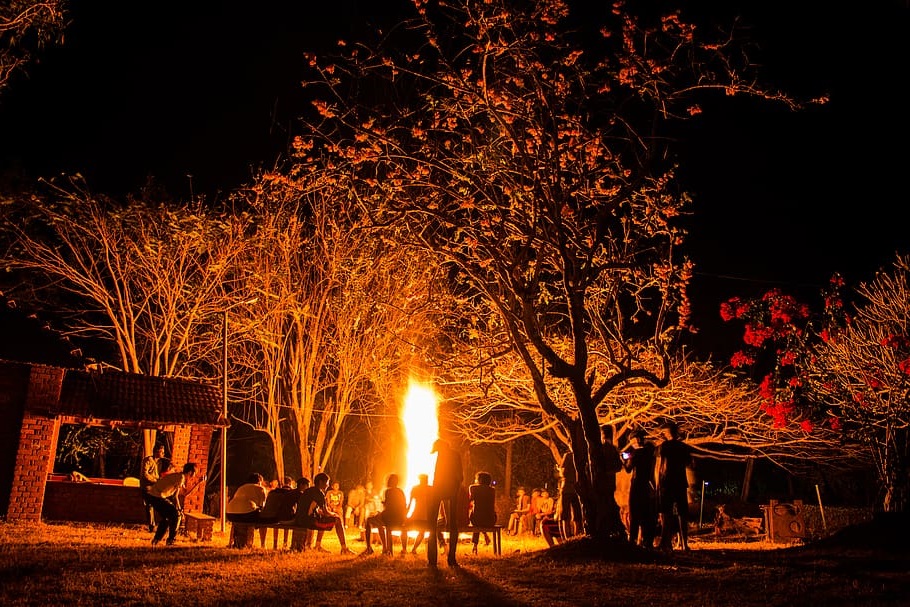
Years ago, my brother-in-law Kenny and I initially turned to fishing along the backtrails because we got tired of fishing shoulder to shoulder with so many other fishermen. As the recreational fishing public continues to grow in staggering numbers, and the waters become more and more crowded, the pressure on this country’s fisheries will increase. Hiking into the backcountry is one the most obvious ways to get away from all the other anglers. And we like to bring our kids.
The combination of backpacking and fishing gets you to places you might not otherwise visit, some of the prettiest places on earth. Fishing for timberline trout amidst stands of evergreen forests, under craggy peaks, and standing over verdant meadows is what backpack angling is all about. Backpack angling takes you into the Appalachians, the Rockies, the Cascades, the Sierra Nevadas, the Pecos Wilderness or Cruces Basin Wilderness. There are wilderness spots in almost every state with excellent backcountry angling.
The trout may not be as big as those found in year-round lowland trout lakes and streams, but they are usually wilder and much prettier. What’s more, you won’t see many people in these off-the-beaten-path places. Casting away the day under azure skies, away from crowds is indescribably wonderful.
Going into the backcountry doesn’t necessarily mean sloshing twenty-five miles through bear-infested forests (even though that kind of adventure is one of our favorites). Most anglers fish public accesses, like bridges, and don’t wander far from these easily accessible spots. So if you can be just a little more adventurous than your average fisherman, you can find more solitude and get to trout that have rarely seen a fly. There are thousands and thousands of miles of rarely fished streams teeming with wild and stocked trout. Thousands of high country lakes dot the mountains, and many are fished by only a handful of anglers in a decade.
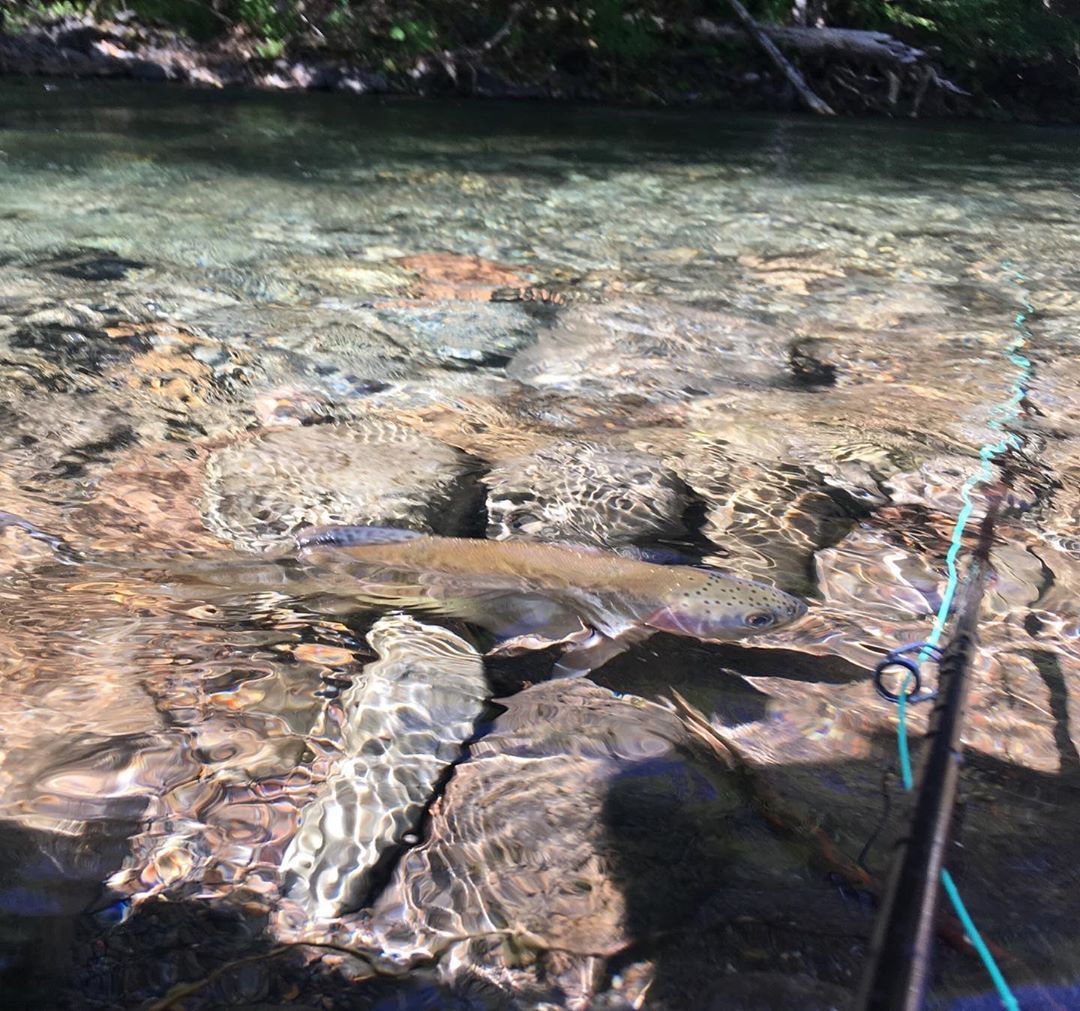
Most backcountry trout are correctly thought to be rather easy prey (though just when you get cocky, you’ll run into fussy trout). You rarely see mountain trout refusing attractor patterns in favor of smaller, more hatch-specific patterns. However, backcountry trout are wary to any shadows, footfalls, and bad casts. They spend much of their day hiding from raccoons, ospreys, eagles, minks, larger trout and other predators, including bumbling fishermen. So what’s there to lose? Even if you fail to catch a trout, you’ll still be in some beautiful country.
And, fishing small streams is the ideal setting to teach children the basics of flyfishing. They can have plenty of room for that errant backcast. Their dragging drifts will still catch little brookies. They will come to appreciate the sunsets and alpine forests and wildlife and all those corny but true ingredients of what makes flyfishing fun.
How do you even begin backpack angling? What kind of backpack fits you best? One of the primary mistakes beginning backpackers make is to pack too much stuff. Doing this to children is tantamount to torture. Their bodies are not suited to carrying heavy loads.
Another mistake is that many neophytes purchase packs and hiking boots that do not fit their needs or their body. Make sure to consult a professional so that your gear matches your requirements. We can attest that ill-fitting equipment can make a backpacking trip a nightmare. Internal frame backpacks are ideal for adults entering the backpack angling craze but if you have an old external frame drawing dust in the garage, wash it off, it still works.
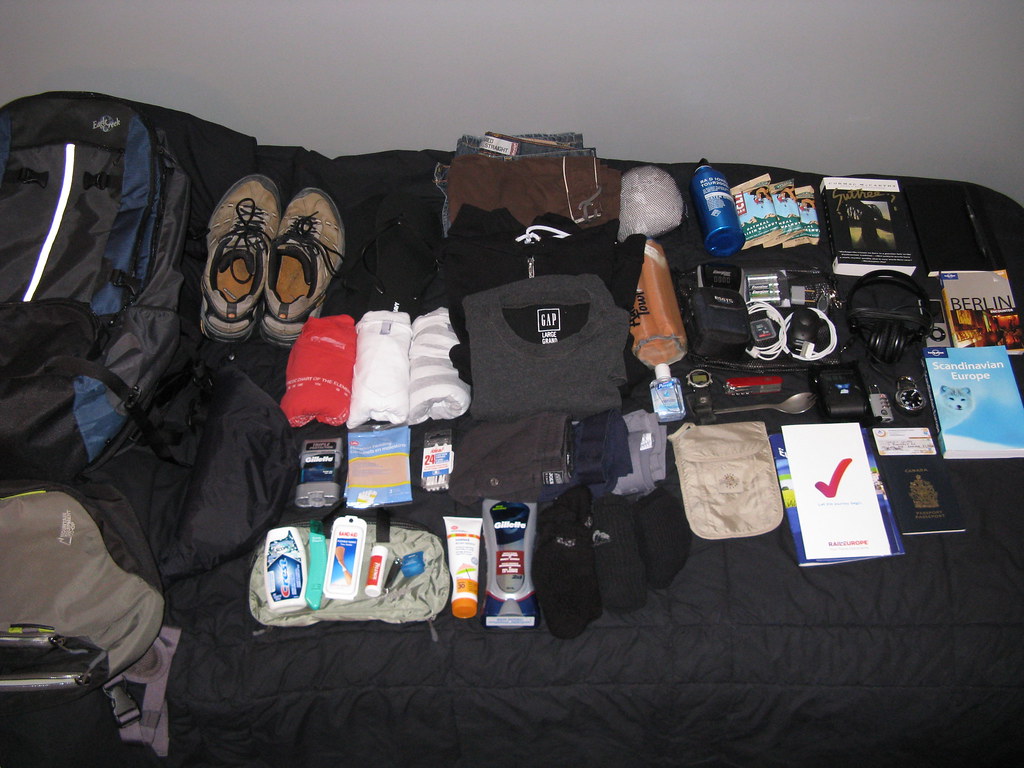
When you take kids along, remember to integrate them into the trip by assigning them chores. Let the kids set the pace, and keep the trip short, at least on the first few outings. As for gear for kids, I recommend purchasing a frame pack since this style easily adjusts to their growing bodies over the years. If you have some extra bucks, the internal frame does fit better but since you shouldn’t be loading their packs with more weight than necessary, the pack load requirements are not as necessary. Comfort is the most important element of a pack for children. You carry the extra weight in your pack, or better yet, leave it behind.
As for angling gear, flyrods are tailor-made for the backpacker. Alpine anglers can now find quality graphite flyrods in multi-piece outfits, perfect for lashing onto your backpack. Many seasoned trail hikers prefer the old 2-piece rods so that they may employ the rod tube as a walking stick. Prices for flyrods range from very cheap to expensive and there are benefits to both. Very cheap ones aren’t worth it because they’ll never stand the rigors of backcountry travel. Go ahead and purchase a multi-piece flyrod, it’s easy to carry and travels in the car and on planes well, too — you need another rod anyway. And the kids can use it on those wide-open meadow streams without you fearing them breaking it in half.
Each of the children needs the chance to fish, but few kids will want to fish for more than an hour or two, not after all that hiking. So we took only two rods when the kids were under twelve and they shared time fishing. While two fished, the other collected pine cones or took photos or helped cook lunch. Now that they are teens, they each have more endurance, more desire to fish longer, so they each carry their own rod.
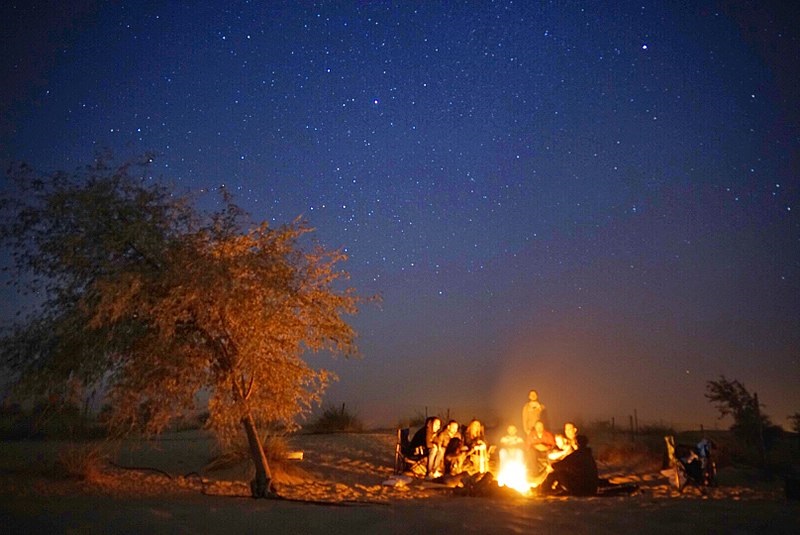
Sure, there are some negatives to sleeping under the stars — bears, ticks, lightning, blisters, insects, getting lost, hypothermia, altitude sickness, and so on. Kids can get scared or hurt. But what the heck, in the big city you can get ecoli poisoning from a burger and paper cuts from file folders. The only negative we run into every time in the backcountry is that we have to eat each other’s cooking. So you need to advise your children about the dangers and you need to be prepared to confront emergencies.
Think about it. No phone, no fax, no folks, plenty of clean air, hiking is healthy, you’ll have solitude, you’ll bond with friends and family, collect cool gadgets and gear — all this and you can fish with dry flies for wild trout. As Chase, Bryan and Sarah exclaimed as we made it to a cliff overlooking the flats, and looked out over the awesome expanse of green meadows and trees, ‘Cool.’ As any parent knows, that is the ultimate compliment.
Tips for taking Kids Backpack Fishing
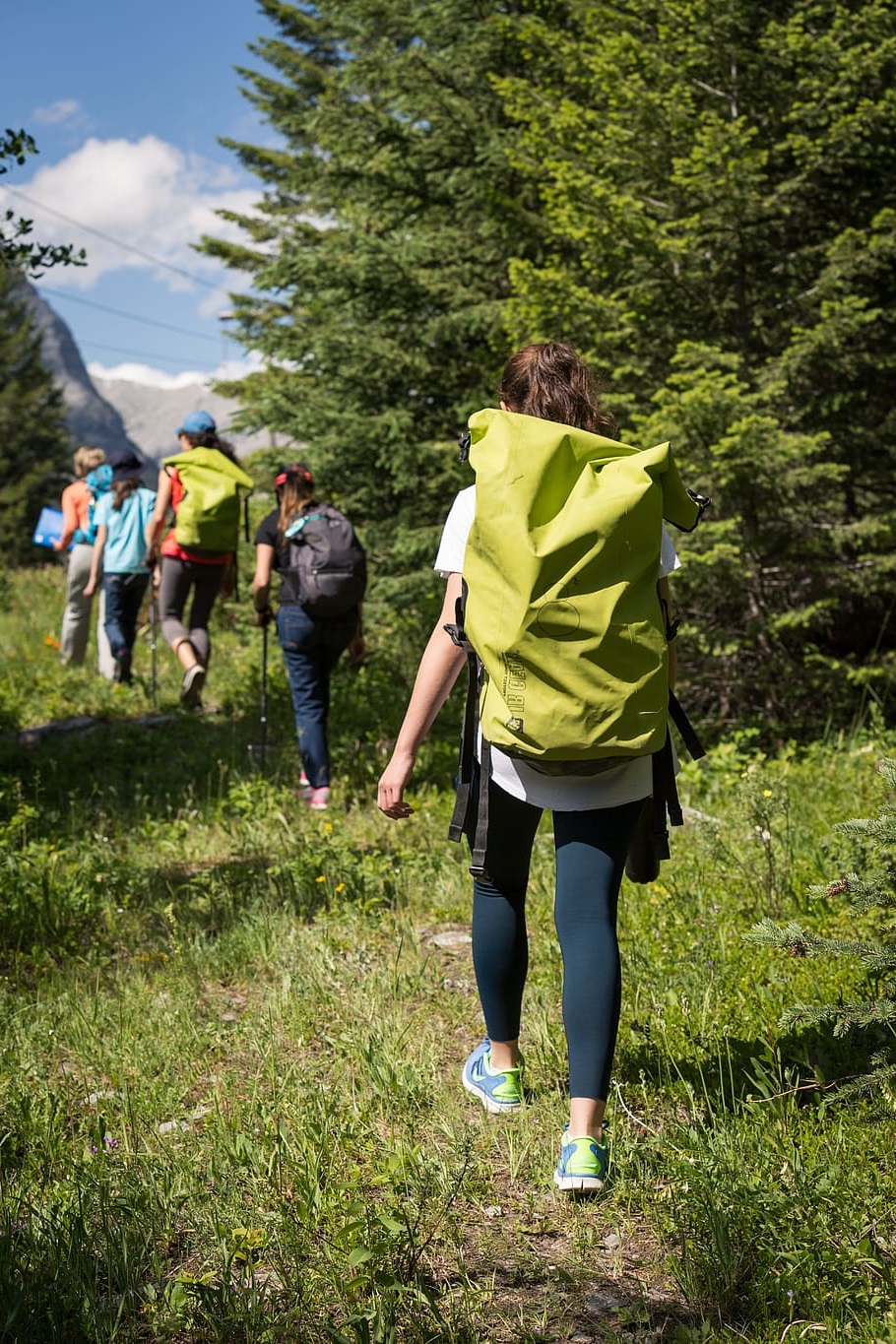
- Be prepared to be the beast of burden
- Keep the pace reasonable
- Bring plenty of grub, because they will eat it
- Take frequent water and snack breaks
- You can take a kid fishing or you can go fishing but you can’t do both — pay attention and help them when they are angling
- Scary stories around a campfire get mighty scary after the fire goes out— use your head
- Stick two kids in a tent and a lot of things will happen — and one thing that won’t happen is a lot of sleep. But we let them talk themselves out. No one is listening but the owls anyway.
How to make the hike Enjoyable for your Kids
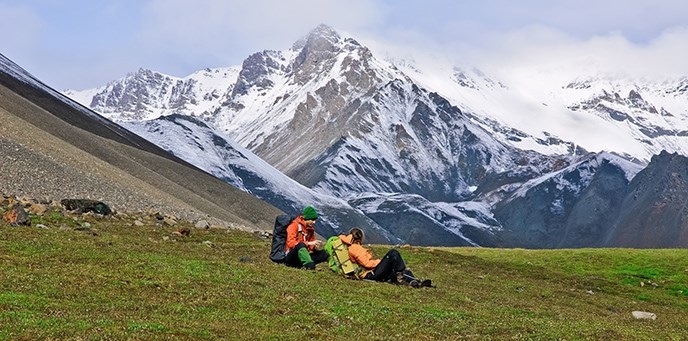
Kids are not ideal candidates to be top-notch hikers. They’ve got short legs, low endurance, get bored easily and can drink their weight in water (or Kool-Aid for that matter). But if you want to get the children out of the house for a day and make their hike (and yours) enjoyable, here are a few tips to consider next time you hit the trail:
- Select an easy, brief hike. Keeping the children interested for more than a mile or two is difficult. And if the hike is strenuous, you’ll never get them to try it again.
- Begin early, not during the heat of the day.
- Stop frequently. Let the kids set the pace.
- Bring plenty of water and snacks. They’ll need it for energy and it gives them a distraction along the way. Make meals hearty and fun, keeping each child involved in the preparation and cooking.
- Dress the children properly. Each should dress in layers so they can add or take off clothes if it gets cool or hot (and it will). Bring along a polarfleece pullover or a sweatshirt in case it gets real cold.
- Make sure their shoes give solid ankle support and have good grips. Tennis shoes are fine but if you can afford hiking boots, they’ll work better. Thick dry socks are important for a good hike too. Bring extras in a daypack because it is inevitable that if you pass a stream or a lake or if it rains, the kids will stomp in the water and soak their socks. Socks that wick away moisture are ideal.
- Bring along insect repellant. Mosquitos and horseflies and no-seeums can turn a great hike into a disastrous one.
- Raingear. Bring panchos or rainjackets for each child.
- Bathe the kids in sunscreen. The sun and UV rays are intense in the outdoors and at high altitudes. Try to make the kids wear caps or hats for further protection. Sunglasses add another level of protection against the sun and any wayward limbs.
- If the kids are big enough, let them carry a daypack. If not, strap a fanny pack to their fanny. This makes them feel involved in the activity. Don’t let them overload the packs or you’ll be carrying the pack back out but if they can stick their own pocketknife or water bottle in the pack, they’ll have a more complete experience.
- Have distractions for them. Collect wildflowers or butterflies or small rocks. Teach them how to use a compass, read a map. Study mushrooms growing in fallen logs or moss growing on trees and rocks. Have them identify animal tracks. You might even carry along walkie-talkies and play with those.
- Bring along a camera to capture the event. Let them take a pic or two as well.
- Keep your children close to you. Don’t let their natural instincts of wandering off or running ahead take hold. There are too many dangers.
- Pack a first-aid kit and know how to take care of someone if they get hurt or ill.
- Hike with more than one adult. There is safety in numbers, and it’s easier to keep up with each child that way
Some Tips for Backpacking Beginners
- Keep it light
- Make sure your backpack and boots fit well. Ill-fitting boots on you or your kids will ruin a trip.
- Don’t buy the largest backpack off the rack. You’ll only be tempted to fill it up.
- Buy the best equipment your budget will allow. Buy cheap and you’ll regret it.
- Learn how to read a map and a compass.
- Learn first aid techniques.
- Bring warm clothes and layer them for greater warmth.
- Leave word of your plans with family or friends.
- Did I mention to keep it light?
Essential Angling Gear to Bring With You When Backpack Fishing
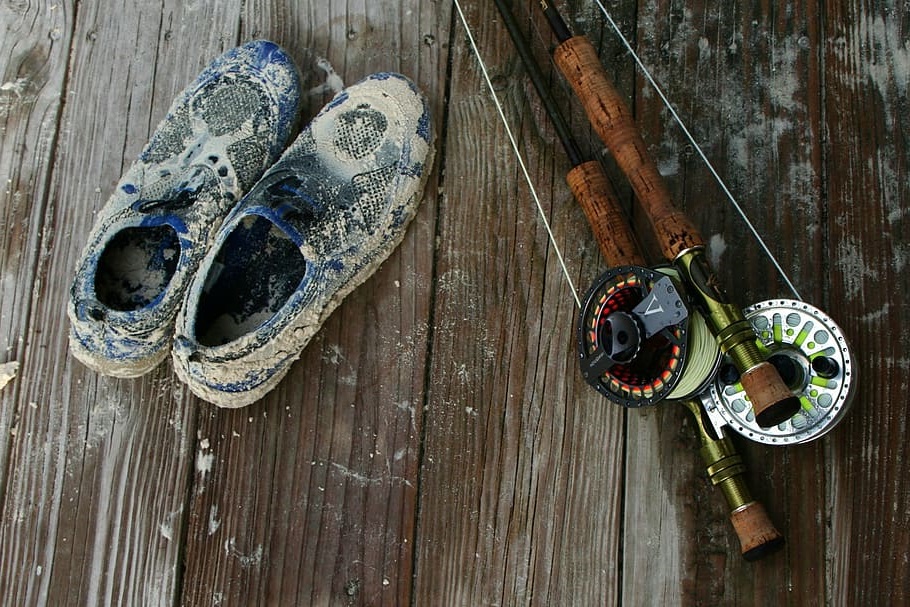
- Flyrod, reel, pliers or Leatherman type tool
- Only one box of flies or lures — keep it simple
- Polarized sunglasses are the most important item. Without them, your eyes are in danger from errant casts. Without them you cannot see beneath the water’s surface. And don’t forget a brimmed hat or cap.
- Leaders, tippet, nippers, forceps, floatant
- Do not bring a vest. Keep it simple, remember.
- Waders? Don’t bother. Wade wet in lightweight wading boots and neoprene socks. The kids can even wade in rubber sandals which double as camp shoes. You just strap them on the back of the pack and you can get to them for stream crossings.
What About Backpacking Gear?
- A backpack which fits your body and pursuits. If you aren’t sure you are going to try this again, borrow or buy inexpensive (not cheap).
- Top-flight hiking boots — waterproof if you can afford them
- Rain gear
- Warm clothes. We like polar fleece tops. Remember to layer.
- First Aid Kit
- Survival Kit (see books for what to include)
- Food (lots of calories to replace those you will be burning) and a camp stove.
- Water (your most important item in your pack). Drink plenty of water but make sure to use a quality water filter, the most effective means of combatting giardia.
- Tent (not one of those cheapies from the big discount stores)
- Sleeping bag and pad.
- Non-cotton socks. Trust us, don’t wear your white cotton socks. Buy wick-away socks and your tootsies will be better off.






